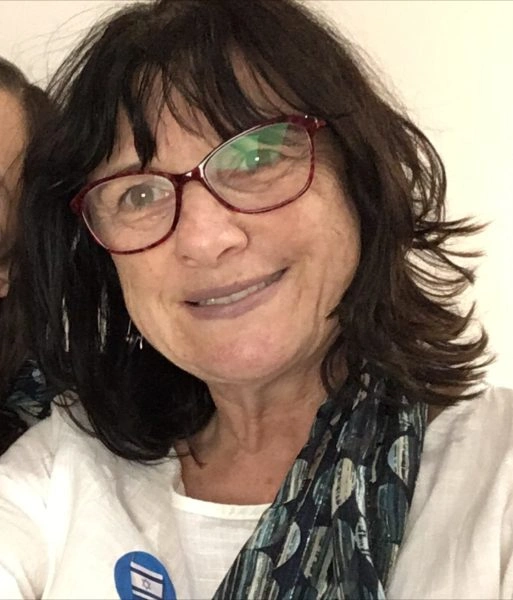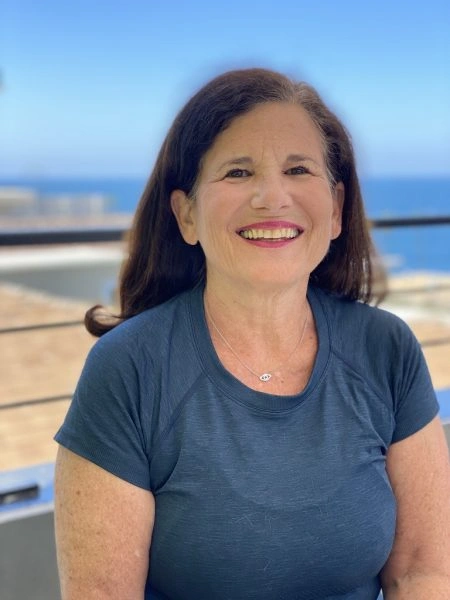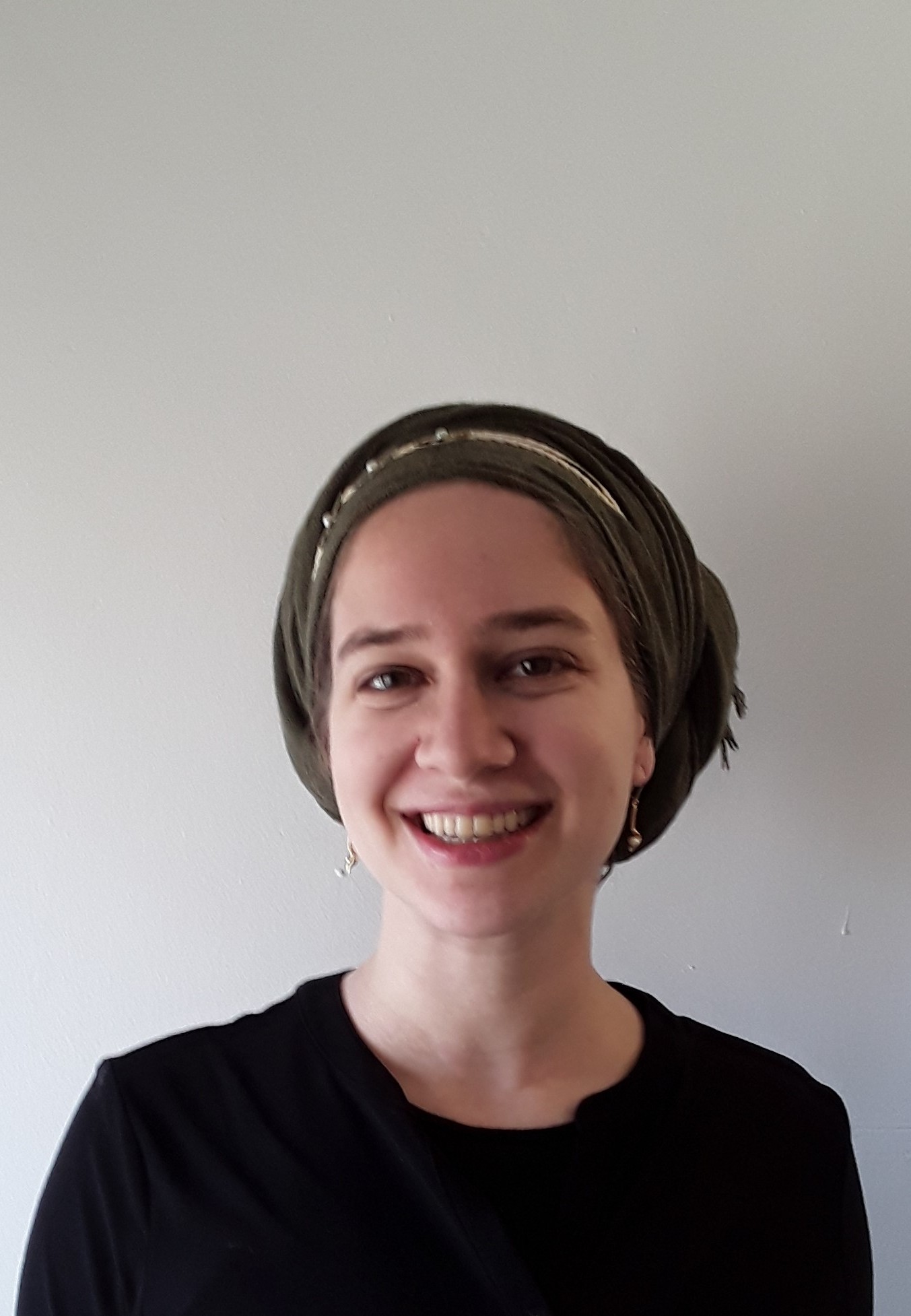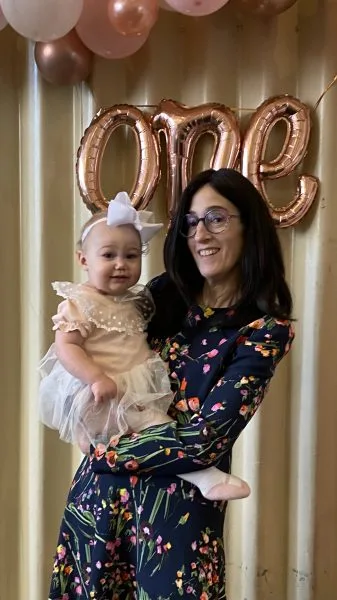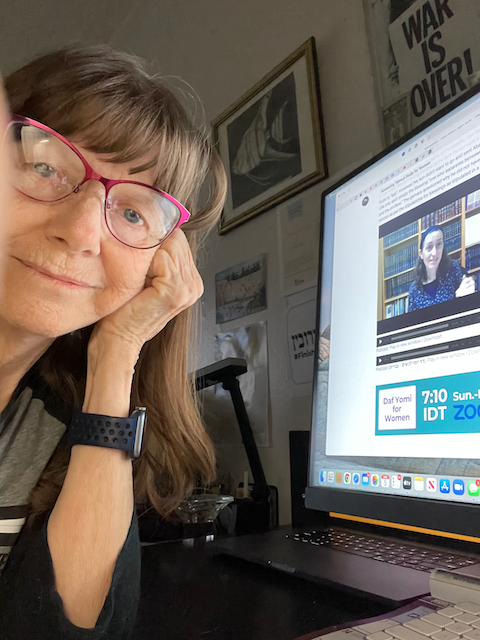Bava Batra 85
כִּלְיוֹ שֶׁל אָדָם קוֹנֶה לוֹ בְּכׇל מָקוֹם, חוּץ מֵרְשׁוּת הָרַבִּים. וְרַבִּי יוֹחָנָן וְרַבִּי שִׁמְעוֹן בֶּן לָקִישׁ דְּאָמְרִי תַּרְוַיְיהוּ: אֲפִילּוּ בִּרְשׁוּת הָרַבִּים.
A person’s vessels effect acquisition of any item placed inside them for him, in any place in which they are situated, except for the public domain. And Rabbi Yoḥanan and Rabbi Shimon ben Lakish both say: Even in the public domain, one’s vessels effect acquisition of items placed in them.
אָמַר רַב פָּפָּא: לָא פְּלִיגִי; כָּאן בִּרְשׁוּת הָרַבִּים, כָּאן בְּסִימְטָא. וְאַמַּאי קָרוּ לַהּ רְשׁוּת הָרַבִּים? שֶׁאֵין רְשׁוּת הַיָּחִיד.
Rav Pappa said: These amora’im do not disagree: Here, when Rav and Shmuel state that one’s vessel does not effect acquisition for him, they are speaking of a vessel placed in the public domain; there, when Rabbi Yoḥanan and Reish Lakish state that his vessel effects acquisition on his behalf, they are referring to a vessel located in an alleyway. And why do they call an alleyway the public domain? The reason is that an alleyway is not a private domain.
הָכִי נָמֵי מִסְתַּבְּרָא, דְּאָמַר רַבִּי אֲבָהוּ אָמַר רַבִּי יוֹחָנָן: כִּלְיוֹ שֶׁל אָדָם קוֹנֶה לוֹ בְּכׇל מָקוֹם שֶׁיֵּשׁ לוֹ רְשׁוּת לְהַנִּיחוֹ. יֵשׁ לוֹ רְשׁוּת – אִין, אֵין לוֹ רְשׁוּת – לָא. שְׁמַע מִינַּהּ.
The Gemara points out: So, too, it is reasonable to interpret Rabbi Yoḥanan’s statement in this manner, as Rabbi Abbahu says that Rabbi Yoḥanan says: A person’s vessels effect acquisition for him in any place where he has permission to keep them. It can be inferred from here: In a location where he has permission to keep them, yes, his vessels effect acquisition for him. But in a place where he does not have permission to keep his vessels, they do not effect acquisition for him, and one has permission to keep his vessels in an alleyway but not in the public domain. The Gemara affirms: Conclude from this statement that when Rabbi Yoḥanan referred to the public domain he meant an alleyway.
תָּא שְׁמַע, אַרְבַּע מִדּוֹת בַּמּוֹכְרִין: עַד שֶׁלֹּא נִתְמַלְּאָה מִדָּה – לַמּוֹכֵר, מִשֶּׁנִּתְמַלְּאָה מִדָּה – לַלּוֹקֵחַ. בַּמֶּה דְּבָרִים אֲמוּרִים – בְּמִדָּה שֶׁאֵינָהּ שֶׁל שְׁנֵיהֶן, אֲבָל אִם הָיְתָה מִדָּה שֶׁל אֶחָד מֵהֶן – רִאשׁוֹן רִאשׁוֹן – קָנָה.
The Gemara suggests: Come and hear a difficulty from a baraita: There are four cases with regard to sellers, i.e., four methods through which merchandise is acquired. When the seller measures merchandise for the buyer, before the measuring vessel has been filled the merchandise in the vessel still belongs to the seller and he can change his mind and cancel the sale. Once the measuring vessel has been filled the merchandise belongs to the buyer. In what case is this statement said? It is said when the seller measures with a measuring vessel that does not belong to either of them. But if the measuring vessel belonged to one of them, the buyer acquires the items of sale one by one as they are placed in the measuring vessel.
בַּמֶּה דְּבָרִים אֲמוּרִים – בִּרְשׁוּת הָרַבִּים וּבְחָצֵר שֶׁאֵינָהּ שֶׁל שְׁנֵיהֶן, אֲבָל בִּרְשׁוּת מוֹכֵר – לֹא קָנָה עַד שֶׁיַּגְבִּיהֶנָּה אוֹ עַד שֶׁיּוֹצִיאֶנָּה מֵרְשׁוּתוֹ. בִּרְשׁוּת לוֹקֵחַ – כֵּיוָן שֶׁקִּבֵּל עָלָיו מוֹכֵר, קָנָה לוֹקֵחַ. בִּרְשׁוּת הַלָּה הַמּוּפְקָדִים אֶצְלוֹ – לֹא קָנָה עַד שֶׁיְּקַבֵּל עָלָיו, אוֹ עַד שֶׁיִּשְׂכּוֹר אֶת מְקוֹמָן.
In what case is this statement said? It is said when the seller measures the items in the public domain or in a courtyard that does not belong to either of them. But if it happens in the domain of the seller, the buyer does not acquire the merchandise until he lifts the measuring vessel or until he moves it out of the domain of the seller. If it is in the domain of the buyer, once the seller accepts upon himself to sell, the buyer acquires it. If the merchandise is located in the domain of this individual with whom it had been deposited, the buyer does not acquire it until the bailee accepts upon himself to designate a place where the merchandise is to be stored for the buyer, or until the buyer rents from the bailee the place where the merchandise is situated.
קָתָנֵי מִיהָא, בִּרְשׁוּת הָרַבִּים וּבְחָצֵר שֶׁאֵינָהּ שֶׁל שְׁנֵיהֶן;
In any event, this baraita teaches with regard to a transaction in the public domain or in a courtyard that does not belong to either of them that if the measuring vessel belonged to one of them, the buyer acquires the items of sale one by one as they are placed in the vessel.
מַאי, לָאו בִּרְשׁוּת הָרַבִּים מַמָּשׁ? לָא; סִימְטָא. וְהָא דּוּמְיָא דְּחָצֵר שֶׁאֵינָהּ שֶׁל שְׁנֵיהֶם קָתָנֵי!
What, is it not stating that a buyer’s vessels effect acquisition of items on his behalf even in the actual public domain, which contradicts Rav Pappa’s explanation? The Gemara answers: No, the baraita is referring to an alleyway, not the actual public domain. The Gemara asks: How can this be what the baraita means? But the baraita teaches that it is similar to a courtyard that does not belong to either of them, i.e., a location to which neither of them have any rights, whereas they both have some rights in an alleyway. Consequently, this must be referring to the actual public domain, not an alleyway.
מַאי ״חָצֵר שֶׁאֵינָהּ שֶׁל שְׁנֵיהֶם״ נָמֵי – דְּלָא דְּהַאי כּוּלָּהּ וְלָא דְּהַאי כּוּלָּהּ; אֶלָּא דְּתַרְוַיְיהוּ.
The Gemara answers: What is the meaning of the phrase: A courtyard that does not belong to either of them? It also refers to shared property, specifically a courtyard shared by partners, which does not belong to this one entirely and does not belong to that one entirely, but rather it is the property of both of them. Consequently, this courtyard is comparable to an alleyway.
בְּעָא מִינֵּיהּ רַב שֵׁשֶׁת מֵרַב הוּנָא: כִּלְיוֹ שֶׁל לוֹקֵחַ בִּרְשׁוּת מוֹכֵר – קָנָה לוֹקֵחַ, אוֹ לָא? אֲמַר לֵיהּ, תְּנֵיתוּהָ: זְרָקוֹ לָהּ לְתוֹךְ חֵיקָהּ אוֹ לְתוֹךְ קַלְתָּהּ – הֲרֵי זוֹ מְגוֹרֶשֶׁת.
Rav Sheshet raises a dilemma before Rav Huna: If the vessels of the buyer are in the domain of the seller, does the buyer acquire the merchandise once it is placed in his vessels or not? Rav Huna said to him: You learned the answer already in a mishna (Gittin 77a): A wife is divorced when her husband hands her a bill of divorce or places it in a manner that is considered equivalent to handing it to her, e.g., placing in her courtyard. Accordingly, if the husband threw the bill of divorce to her into her lap or into her basket [kaltah], this woman is divorced even if she was in her husband’s domain at that time. By the same token, even if the buyer’s vessels are in the domain of the seller, they effect acquisition of the sold items on his behalf.
אֲמַר לֵיהּ רַב נַחְמָן: מַאי טַעְמָא פָּשְׁטַתְּ לֵיהּ מֵהַהִיא, דְּמָחוּ לַהּ מְאָה עוּכְלֵי בְּעוּכְלָא?
Rav Naḥman said to Rav Huna: What is the reason that you resolved Rav Sheshet’s dilemma from that mishna, which has already been struck with one hundred strikes of a hammer [uklei be’ukela]? In their analysis of this mishna, the Sages have already inserted so many qualifications that it cannot be understood in a straightforward manner.
דְּאָמַר רַב יְהוּדָה אָמַר שְׁמוּאֵל: וְהוּא שֶׁהָיְתָה קַלְתָּהּ תְּלוּיָה בָּהּ. וְרֵישׁ לָקִישׁ אָמַר: קְשׁוּרָה, וְאַף עַל פִּי שֶׁאֵינָהּ תְּלוּיָה בַּהּ. רַב אַדָּא בַּר אַהֲבָה אָמַר: כְּגוֹן שֶׁהָיְתָה קַלְתָּהּ מוּנַּחַת לָהּ בֵּין יַרְכוֹתֶיהָ. רַב מְשַׁרְשְׁיָא בְּרֵיהּ דְּרַבִּי אַמֵּי אָמַר: כְּגוֹן שֶׁהָיָה בַּעְלָהּ מוֹכֵר קְלָתוֹת.
As Rav Yehuda says that Shmuel says: This halakha of the mishna in Gittin applies only if her basket was hanging from her body, so that it is considered on her or in her hand. And Reish Lakish says: It is sufficient if it was tied to her, even though it is not hanging from her, but resting on the ground. Rav Adda bar Ahava says: The mishna is referring to a case where her basket was placed between her thighs. Although it is not hanging from her, since it is placed on her body it serves to acquire the bill of divorce on her behalf. Rav Mesharshiyya, son of Rabbi Ami, says: This is referring to a case where her husband was a basket seller. Since he is not particular about the place where the basket into which he placed the bill of divorce is located, as his entire courtyard is full of baskets, it is considered as though he expressly granted her the right to make use of its location.
רַבִּי יוֹחָנָן אָמַר: מְקוֹם חֵיקָהּ קָנוּי לָהּ, מְקוֹם קַלְתָּהּ קָנוּי לָהּ. אָמַר רָבָא: מַאי טַעְמָא דְּרַבִּי יוֹחָנָן? לְפִי שֶׁאֵין אָדָם מַקְפִּיד לֹא עַל מְקוֹם חֵיקָהּ וְלֹא עַל מְקוֹם קַלְתָּהּ.
Rabbi Yoḥanan says: The place of her lap, i.e., the place within her husband’s property where she stands or sits, belongs to her, and the place of her basket is acquired to her. Rava said: What is the reason behind the statement of Rabbi Yoḥanan? It is because a person, including a husband, is not particular neither about the place of her lap nor about the place of her basket, as she requires these areas and they do not take up much space. It is evident from all of these qualifications that one cannot infer a halakhic principle from here with regard to a buyer’s vessels in a seller’s domain.
אֶלָּא פְּשׁוֹט לָהּ מֵהָא: בִּרְשׁוּת מוֹכֵר – לֹא קָנָה עַד שֶׁיַּגְבִּיהֶנָּה אוֹ עַד שֶׁיּוֹצִיאֶנָּה מֵרְשׁוּתוֹ. מַאי, לָאו בְּכִלְיוֹ דְלוֹקֵחַ? לֹא, בְּכִלְיוֹ דְמוֹכֵר.
Rather, resolve the dilemma from that which was taught in a baraita: If the merchandise was in the domain of a seller, the buyer does not acquire the merchandise until he lifts it or until he removes it from the domain of the seller. What, is it not referring to merchandise placed in the vessels of the buyer, which proves that the buyer’s vessels do not effect acquisition of the merchandise on his behalf when they are in the seller’s domain? The Gemara answers: No, this does not serve as proof, as it is referring to merchandise placed in the vessels of the seller. That is why the buyer must lift or pull the merchandise to acquire it.
וּמִדְּרֵישָׁא בְּכִלְיוֹ דְמוֹכֵר – סֵיפָא נָמֵי בְּכִלְיוֹ דְמוֹכֵר; אֵימָא סֵיפָא: בִּרְשׁוּת לוֹקֵחַ, כֵּיוָן שֶׁקִּיבֵּל עָלָיו מוֹכֵר – קָנָה לוֹקֵחַ. וְאִי בְּכִלְיוֹ דְמוֹכֵר, אַמַּאי קָנָה לוֹקֵחַ? סֵיפָא אֲתָאן לְכִלְיוֹ דְלוֹקֵחַ.
The Gemara asks: But from the fact that the first clause is referring to the vessels of the seller, as currently understood, the latter clause must also be referring to the vessels of the seller. Say the latter clause: If the merchandise was in the domain of the buyer, once the seller accepts upon himself to sell an item, the buyer acquires it. And if this is referring to merchandise in the vessels of the seller, as in the earlier clause, why does the buyer acquire it? The Gemara answers: In the latter clause, we come to a different scenario, which involves the vessels of the buyer.
וּמַאי פַּסְקָא? סְתָמָא דְמִילְּתָא, בֵּי מוֹכֵר – מָאנֵי דְמוֹכֵר שְׁכִיחִי, בֵּי לוֹקֵחַ – מָאנֵי דְלוֹקֵחַ שְׁכִיחִי.
The Gemara asks: But if the clauses of the baraita are addressing different cases, why was it stated without qualification? The Gemara answers: The normal way of things is that in the house of the seller the vessels of the seller are commonly found, and in the house of the buyer the vessels of the buyer are commonly found. In sum, the dilemma cannot be resolved from the baraita.
אָמַר רָבָא, תָּא שְׁמַע: מָשַׁךְ חֲמָרָיו וּפוֹעֲלָיו, וְהִכְנִיסָן לְתוֹךְ בֵּיתוֹ; בֵּין פָּסַק עַד שֶׁלֹּא מָדַד, וּבֵין מָדַד עַד שֶׁלֹּא פָּסַק – שְׁנֵיהֶן יְכוֹלִין לַחֲזוֹר בָּהֶן.
Rava said: Come and hear a resolution from a baraita: If one pulled his donkey drivers, thereby dragging along with them the donkeys laden with goods, and likewise, if he pulled his laborers, who were carrying merchandise he wished to purchase, and he brought them into his house, whether he fixed a price before he measured the merchandise or whether he measured before fixing a price, both parties can renege on the sale, provided that the merchandise has not been unloaded from the laborers or the donkeys.




